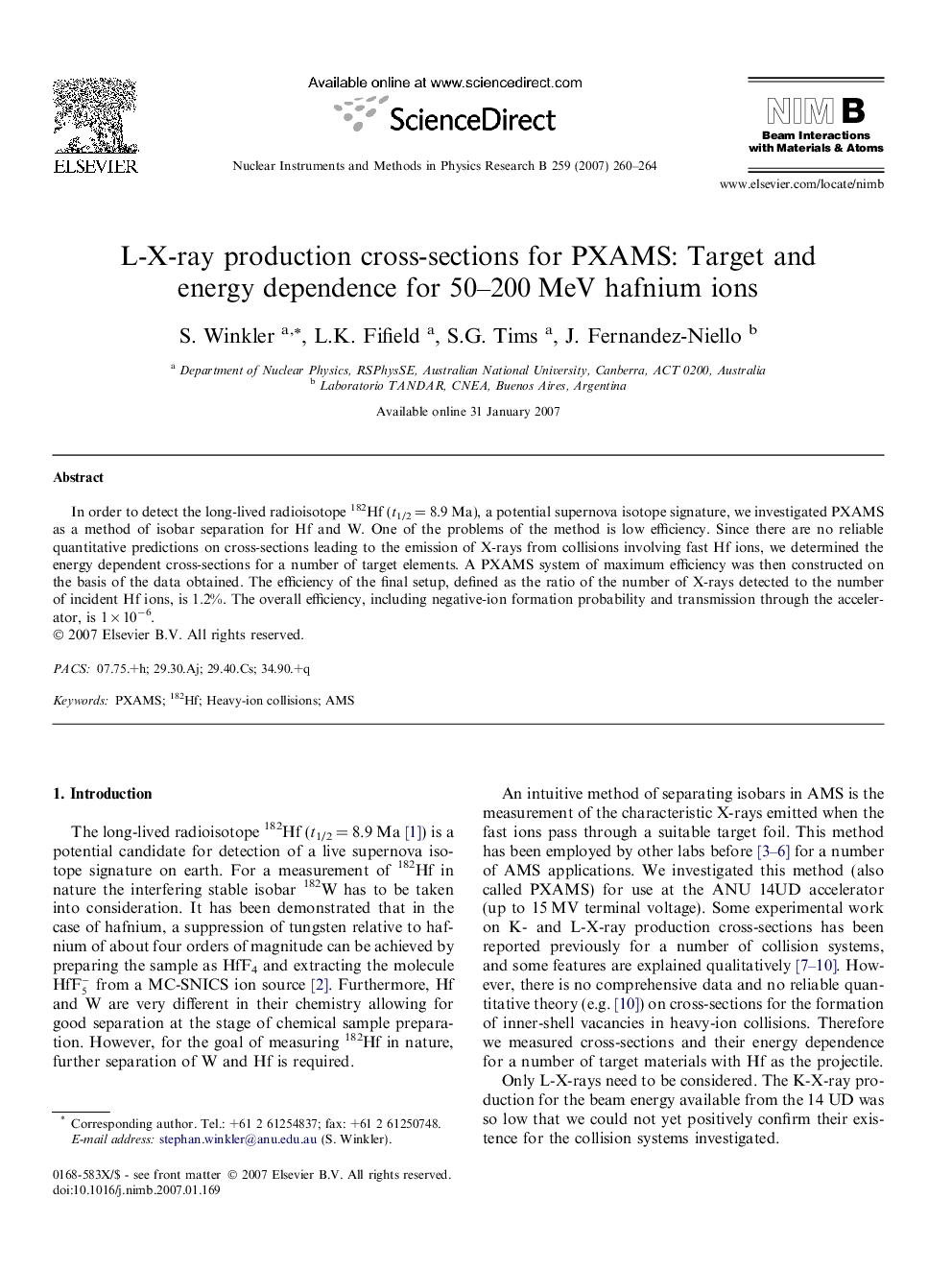| Article ID | Journal | Published Year | Pages | File Type |
|---|---|---|---|---|
| 1685830 | Nuclear Instruments and Methods in Physics Research Section B: Beam Interactions with Materials and Atoms | 2007 | 5 Pages |
In order to detect the long-lived radioisotope 182Hf (t1/2 = 8.9 Ma), a potential supernova isotope signature, we investigated PXAMS as a method of isobar separation for Hf and W. One of the problems of the method is low efficiency. Since there are no reliable quantitative predictions on cross-sections leading to the emission of X-rays from collisions involving fast Hf ions, we determined the energy dependent cross-sections for a number of target elements. A PXAMS system of maximum efficiency was then constructed on the basis of the data obtained. The efficiency of the final setup, defined as the ratio of the number of X-rays detected to the number of incident Hf ions, is 1.2%. The overall efficiency, including negative-ion formation probability and transmission through the accelerator, is 1 × 10−6.
